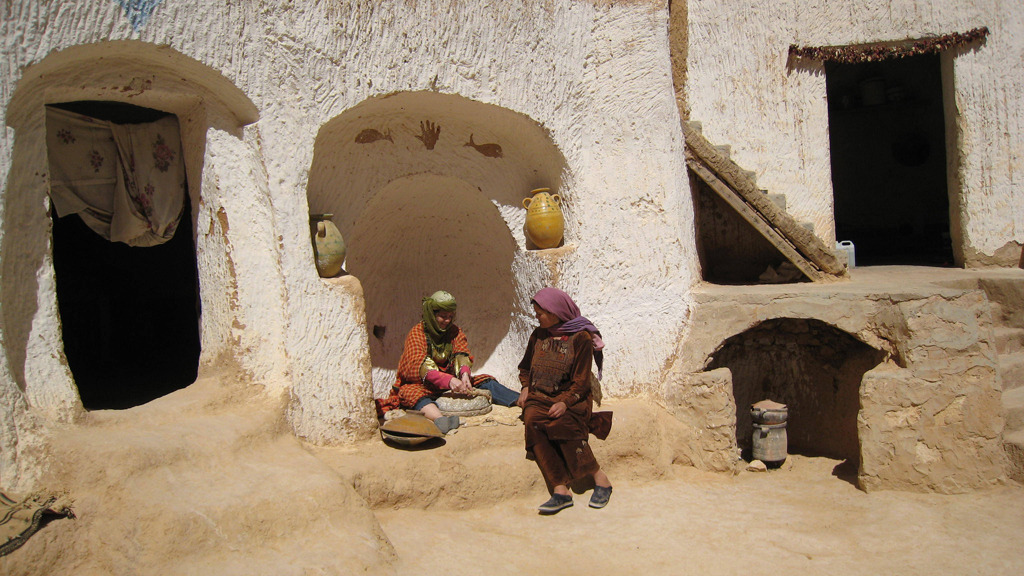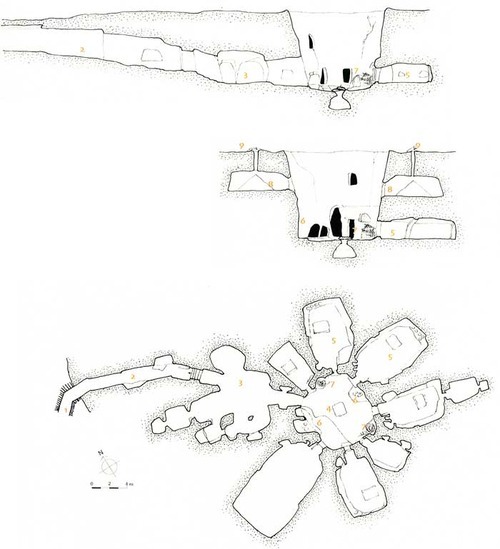V 16 |
Matmata pit house |
type |
|
place |
|
population |
In the Matmata region of Tunisia several hundred artificial pit houses are sunk into the soft sandstone hills. Their origins and history are unclear. Perhaps escaping from overpopulation in the coastal regions or to fleeing from conquerors (marauding Romans during the 3rd Punic War, or perhaps Arab tribes) their builders, Berber tribes often known as Matmata, developed unique dwellings in this part of Tunisia.
The foundation and centre of the lives of these Berber people, who live in large family groups, is a roughly circular pit about nine metres in diameter and a similar depth which may be cut into a hillside, riverbank or plateau. These pits from the inner courtyards of the houses, offering not only climatic benefits (an average temperature of 20-22°C) but also a not insignificant defensive edge – the houses can only be approached down an easily monitored tunnel like ramp set into the earth. If the pit is sunk into a riverbank then it is protected from the outside by a thick wall, for strategic reasons.
The various rooms: living rooms, kitchens, stalls for the animals and storerooms are scooped out of the walls of the inner courtyard and maybe on more than one level. Often instead of building separate furniture the benches and beds are simply carved out of the sandstone (or rather, left uncarved). The rooms are often adorned with vaulted ceilings made of layers of mud, and crazily winding staircases help the inhabitants to get around.








